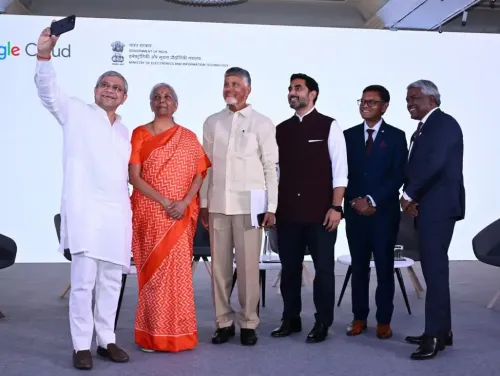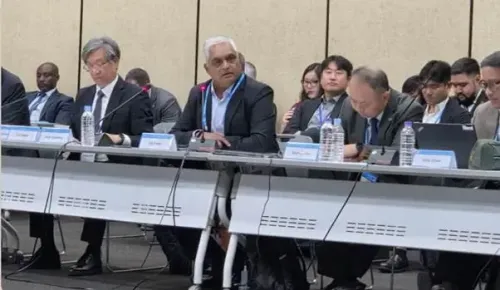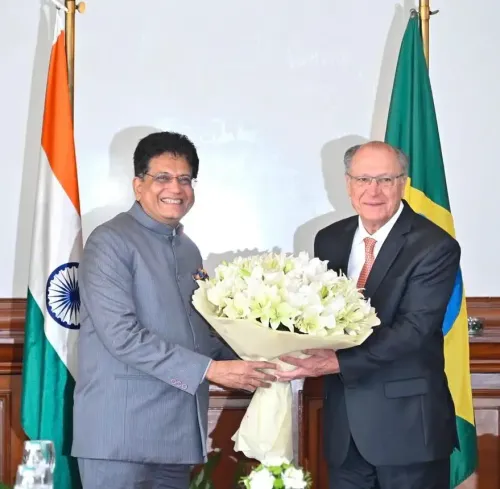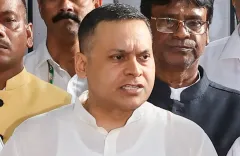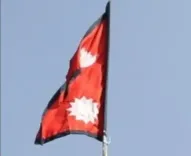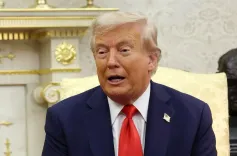Did PM Modi Really Visit Northeast India 70 Times?
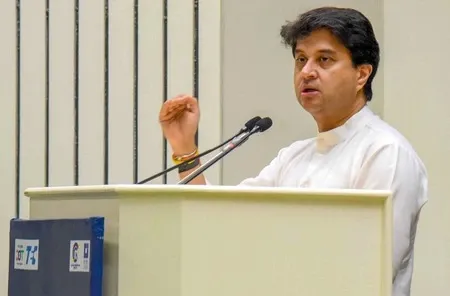
Synopsis
Key Takeaways
- PM Modi's 70 visits to Northeast India set a record for Prime Ministers.
- Rs 5 lakh crore investment has been made in the region's development.
- Infrastructure improvements include new airports, roads, and railways.
- The Northeast is growing 11 to 13 percent annually, outpacing national averages.
- BSNL has returned to profitability after 18 years, demonstrating effective reforms.
New Delhi, July 2 (NationPress) Union Minister for Communications and the Development of Northeastern Region (DoNER), Jyotiraditya Scindia, expressed admiration for Prime Minister Narendra Modi, highlighting that the PM has made 70 visits to northeast India, setting a remarkable record.
Scindia noted that if you aggregate the visits made by all Prime Ministers over the past 65 years, they still cannot match PM Modi's frequency. Furthermore, an investment of Rs 5 lakh crore has been allocated to the northeastern region.
In a candid conversation with IANS, Jyotiraditya Scindia addressed various subjects, including his forecasts for the Bihar polls and the resurgence of BSNL.
Below is the complete interview:
IANS: The previous administration did not prioritize northeast India. However, PM Modi referred to the region as ‘Ashta Lakshmi’. What’s your perspective on this?
Jyotiraditya Scindia: To understand this, we must reflect on India's history. The northeastern region has historically served as a bridge connecting the world to the Global South. Trade routes and migration paths from all ASEAN countries were centered around the northeast. This region was a vital connector, and had its potential been recognized globally, it would have been praiseworthy. Over the last 65 years, however, it was gradually neglected, hindering its development and advancement. To change this narrative, the Prime Minister has dedicated all his efforts to the growth and progress of the northeastern region. This commitment is a reflection of his convictions. He has personally visited the region roughly 70 times, which is a remarkable feat. When you sum up the visits by all Prime Ministers in the past 65 years, they cannot compete with his number of trips. Additionally, Rs 5 lakh crore has been invested in the northeastern region. In terms of infrastructure—whether it’s roadways, railways, or aviation (my former ministry)—the number of airports has increased from nine in 2014 to 17 today. States like Arunachal Pradesh and Sikkim, which previously had no airports, now boast four and one airports respectively. With regards to roads, the National Highways stretched 10,000 kilometres before; now, they extend to 16,000 kilometres. This indicates that in just ten years, we have constructed nearly as much as was done in the previous 65 years. In rural areas, we've built 40,000 kilometres of roads with an investment of Rs 50,000 crore. The same progress is evident in railways, with nearly 2,000 kilometres of new railway lines being constructed with an investment of Rs 80,000 crore. Our commitment is to deliver railway services to all eight states. Currently, rail service is operational in five states, and we aim to extend it to the remaining three by 2027. Presently, the country’s longest road bridge—the 4.5-km Bhupen Hazarika Bridge—has been inaugurated, alongside the world’s longest road-cum-rail bridge—the 9.5-km Bogibeel Bridge. This achievement was beyond our wildest expectations. Likewise, in the social sector—covering health, education, and other domains—the objective is to elevate the eight northeastern states as the growth engine of the nation. Currently, the global economic growth rate hovers around 2.5 percent. In contrast, India is experiencing growth rates between 7 to 7.5 percent, over three times the world average. Notably, the northeastern states are thriving at rates of 11 to 13 percent over the past decade. This indicates that the northeastern region is growing approximately 3.5 to 4 times the world average and more than double India’s average. Therefore, if we envision all Indian states and Union Territories as a train, the northeastern region has undoubtedly become its engine.
IANS: How do you respond to the slogan “Narendra Surrender” coined by the Leader of Opposition Rahul Gandhi?
Jyotiraditya Scindia: What else can a political party, rejected by the populace, articulate? The nation’s dignity and pride should always take precedence. However, the Congress party has sunk into such depths that it tarnishes India’s image globally, returns home, and questions our military, identity, faith, and pride. When surgical strikes or the Balakot operation occur, they demand evidence. During Operation Sindoor, they inquire about the number of aircraft downed. It is evident that the Indian populace is indifferent towards a leadership that disregards the country’s pride.
IANS: What are your predictions for the Bihar elections?
Jyotiraditya Scindia: We are fully optimistic about Bihar. The NDA coalition government is set to form. The BJP and all its allies will collaborate. Our main focus remains on serving Bihar, promoting its development, and ensuring its progress. The Prime Minister has demonstrated over the past decade that development and progress are our focus. Change is the clarion call of India, and the Prime Minister has successfully ushered in this transformation across the entire region—economically and socially, in every sector—and is elevating India’s stature on the global stage.
IANS: The digital revolution has completed a decade. PM Modi authored an article on this. What are your views on this accomplishment?
Jyotiraditya Scindia: I want to emphasize that this transformative change is not limited to India but is occurring globally. Approximately a century ago, the Industrial Revolution took place, resulting in the establishment of roads and railways that laid the groundwork for industrial advancement. In this century, during the Information Technology and Digital Revolution, we see a similar evolution akin to the construction of roads and railways. The distinction lies in the visibility; the latter was tangible, while this digital infrastructure is intangible. Yet, its capacity to revolutionize everyday lives is extraordinary. As a citizen, I extend my gratitude and congratulations to the Prime Minister. A decade ago, he foresaw this revolutionary change and devised a comprehensive strategy for India to emerge as a dominant force in this digital revolution. Let me share some statistics. A nation that had merely 90 crore mobile users now boasts 120 crore. Internet connections increased from 25 crore to nearly 100 crore. Broadband connections surged from just 6 crore (defined as over 2 GB) to 94 crore. This shift is unprecedented. What does this transformation enable? It's not merely a telecommunications revolution; the entire world is at your fingertips. The implications? Economic advancement. Government payments can now be transferred directly to you. You can conduct business globally. Thanks to this, India has achieved record-breaking numbers in UPI and DBT. Today, 46 percent of the world’s digital transactions occur in India, with approximately 1.7 billion transactions generated annually, amounting to around three trillion dollars. India is not a follower; it is a leader in digital transactions. The credit for creating this digital highway and enabling UPI and DBT can be attributed to Prime Minister Narendra Modi. Moreover, consider the cost implications. A decade ago, data was priced at Rs 290 per GB. Today, it stands at about Rs 9.5 per GB, marking a 95 percent reduction. Globally, the average data rate is approximately $2.50 per GB. India’s pricing is merely five percent of that, positioning India to become the world’s data bank and leader in the digital domain.
IANS: BSNL recently reported a profit. How did this come to fruition?
Jyotiraditya Scindia: The UPA government had left BSNL in dire straits—barely clinging to life. The Prime Minister was resolute in his commitment to revitalizing BSNL for public service and restoring its beloved status. Numerous economic packages were introduced, including Rs 3 lakh crore for BSNL. Strategic initiatives were implemented. Thanks to unwavering dedication from the entire BSNL team, from grassroots linesmen to headquarters staff, we have witnessed remarkable progress. For the first time in 18 years, during the October–December 2024 quarter, BSNL recorded a net profit of Rs 262 crore. In the January–March 2025 quarter, it achieved Rs 280 crore in net profit, a feat unseen in the last 18 years. For FY 2025, BSNL reported an 8 percent revenue increase, from Rs 20,000 crore to nearly Rs 21,900 crore. Operating profit surged from Rs 2,346 crore last year to Rs 5,300 crore this year—a staggering 150 percent increase. The net loss, which was Rs 5,170 crore last year, has been curtailed by 55 percent to Rs 2,100 crore. Last year, BSNL achieved the highest CAPEX in its history at Rs 25,000 crore. For the first time, India has developed its own military-grade stack for comprehensive 4G deployment. A total of 95,000 sites have been established, nearly 90,000 commissioned, and approximately 74–75,000 are operational. Our 4G network is fully equipped with a self-reliant solution. We are applying a similar strategy in India Post. Over the past year, we have focused on complete business process reengineering. Six verticals and four horizontals have been established to ensure profitability for each business line. Through our IT 2.0 plan, we have appointed a Chief Technology Officer in the postal department, along with Deputy CTOs for each vertical. We are analyzing our cost structure, benchmarking against competitors, and strategizing to enhance revenue. By optimizing, automating, and concentrating on each vertical, we are preparing India Post to transform into a logistics powerhouse. No distribution platform worldwide boasts as many points of presence as India Post—1,84,000. Our goal is to evolve this into a logistics giant in the near future.

